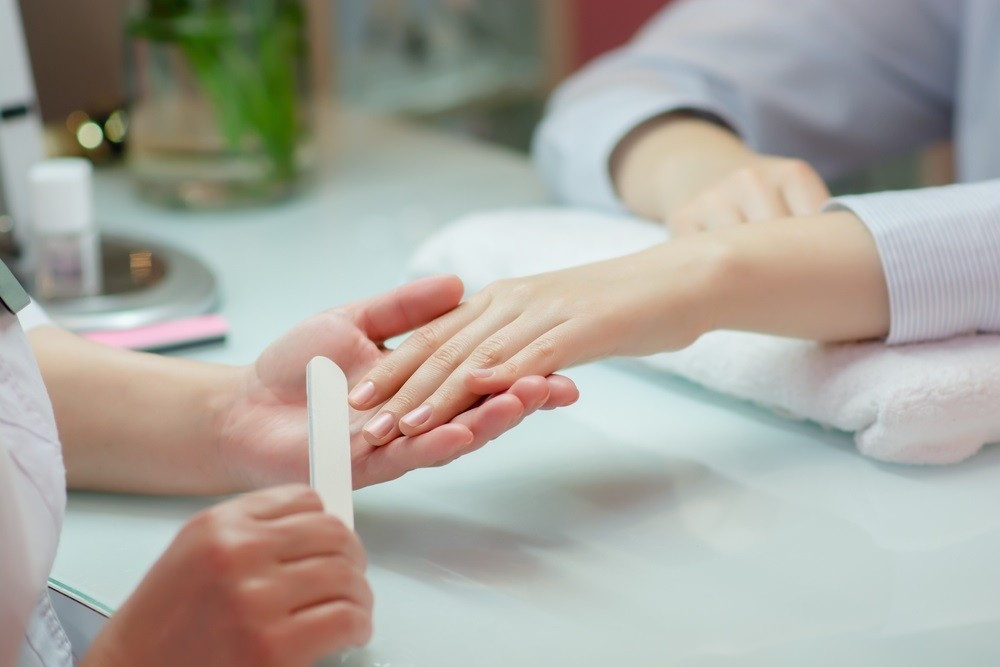Contents

A manicure or pedicure may be a rejuvenating experience that leaves us feeling refreshed and lovely. However, incorrect washing and sanitizing of nail equipment might make that spa ritual more hazardous than helpful.
Minor, easily treated infections can spread too far more serious ones in salons.
The usual bacterial infections like staph or strep that develop when there is a breakdown in the epidermis are the typical illnesses we would be concerned about with nail salons, he said. “Atypical micro-bacterial infections, which are relatives of tuberculosis and have been observed in nail salons, are another exotic infection that concerns us. They often take a very long time to diagnose and treat with antibiotics. Also on our minds is the possibility of fungus infestations.
Ostrosky thinks two to three patients with serious illnesses thought to have started in a manicure salon visit his Memorial Hermann practice each year.
When individuals visit salons, they should be questioning cleanliness and hygienic standards, according to a dermatology professor at Baylor College of Medicine.
The first step is to ask yourself, “If this is how it appears to the public, are there any red flags? Then what does it appear to be behind the scenes?” Katta clarified. “The obvious things are what you want to look for: Are the garbage cans overflowing? Do the workspaces have any nail clippings, filings, or other debris?
Customers have the right to inquire of a nail technician about how the foot basins are cleaned, how the equipment is sterilized, and to watch as newly sterilized instruments are opened, she continued.
“As a customer, you are not going to see most of those operations,” she added. “There are specific instructions on cleaning a whirlpool foot basin and utilizing disposable liners for the foot basin. “You have faith that the salon adheres to the acknowledged standards.”
After getting a manicure or pedicure, you should seek emergency medical assistance if you discover an abscess, redness, or swelling in your nail bed.
The experts offer several additional suggestions for avoiding infections:
Do not get services if you have an open wound.
It’s not a good idea to get a pedicure if you have an open wound, a rash, or an infection on your legs or feet, according to Katta. Microtraumas form on your skin when you shave your legs, increasing the chance of bacterial exposure.
According to Katta, “your skin barrier becomes a route for infection if it is compromised in any way.” Your skin typically defends you against bacteria, fungi, and viruses. However, if your skin barrier is compromised in any way, it will be simpler for these infectious organisms to pass through and infect you. Please visit Maby blog to update the latest nail news.
Check for licenses
Make sure the nail salon you chose has a state license, advised Ostrosky. “Having a state license indicates that the salon has undergone an inspection and adheres to specific sanitary requirements. You want to confirm that the actual beauty specialist who works on you is licensed and ensures a certain level of hygiene there. That indicates that they have received training in technique and sterilization. That makes a good manicure.
Bring your tools
If you need clarification on the salon’s cleanliness, bring your pumice stones or emery boards or request that they use a disposable one they open in front of you, advised Katta. “You must ensure that any reusable metal files are thoroughly sanitized in an autoclave. You can transmit bacteria or viruses from one person to another if they have yet to be adequately sterilized.
In the past ten years, cosmetologists, including nail technicians, have received more than 2,300 administrative orders or regulatory punishments throughout Lone Star State. Following are a few instances of nail technician infractions from the Texas Department of Licensing and Regulation website in 2018:
Tools, utensils, and supplies should have been cleaned with an EPA-registered disinfectant solution before being used on each client, but the respondent should have done so.
Respondent could not clean and sanitize whirlpool foot spas as needed at the end of each day; Respondent should have discarded single-use goods after each usage.
The respondent could not correctly dispose of single-use goods because they needed to be equipped with an autoclave, a dry heat sterilizer, or an ultraviolet sanitizer. After consulting salons, find out cost and tips for manicures, pedicure and manicure prices.
Applicators were left standing in the wax, and the respondent should have disinfected equipment, implements, and supplies with an EPA-registered disinfectant solution.
The respondent did not thoroughly clean and sanitize an object that came into touch with blood.
When we see situations here, we typically don’t report nail salons, according to Ostrosky. We don’t record these things unless I notice a pattern since, according to Texas law, they are not reportable diseases—but customers can always complain.
The Pedicure: Are You Getting it Right?
You decide to visit your neighborhood nail parlor because you want your nails to be done. You’ve already done it. But have you paused to think about every aspect of a good, secure pedicure, including the whens, wheres, whys, and hows? There are a few tips for maintaing visits to the nail salon for pedicures. Before you allow your feet to be subjected to this process, there are a few things you should be asking yourself. Check this out:
1. What should you do next?
Think carefully before choosing which salon to visit. The Ohio State Board of Cosmetology establishes guidelines that all nail salons must follow. These guidelines ensure that the salon follows good hygiene practices, including providing clean water and disposing of waste in an environmentally friendly manner and safeguarding your feet from infectious diseases. Ask around for recommendations of spotless, respectable salons if you’re new to the Cleveland region or haven’t gone in a while.
2. What should you look for at the salon?
- A sign declaring that the salon has a license to operate should be posted at or close to the main door. Make sure it is up to date.
- Are there any tools lying around? They ought to be soaked in disinfectant in a covered container. Therefore they shouldn’t be.
- Look about you for indications of unkemptness, such as dusty equipment, liquid-filled containers, dirty towels, etc.
- Please ensure the sink has been cleaned after the previous client used it.
- If a salon only accepts cash, this may be a sign that the operation isn’t legal.
3. Is it necessary when you leave?
Avoid shaving your legs right before getting your nails done. Minor wounds and abrasions during shaving may result in the entry of bacteria. Of course, you should postpone going to the salon if you have infected nails or open sores on your feet until they have healed.
In addition to caring about your feet’s aesthetics, Foot & Ankle Associates of Cleveland advises keeping them clean and in good condition. Spend a few minutes looking around a salon so you can relax, knowing that your feet and toes will emerge vibrant, shiny, energized, and infection-free.
